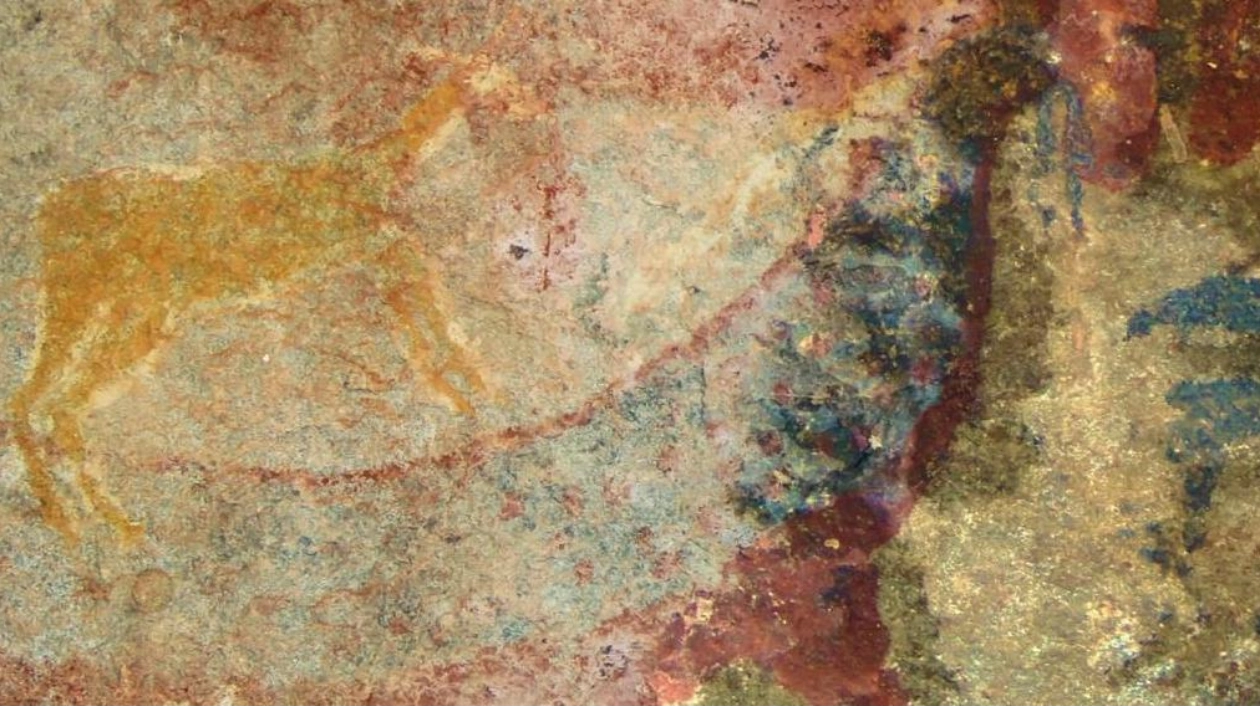Rock art from Africa, depicting a mythical tusked creature, could reflect the appearance of fossils belonging to ancient mammal relatives known as dicynodonts. Paleontologist Julien Benoit notes that abundant, exposed fossils in South Africa’s Karoo Basin include dicynodont skulls with tusks that curve downward and backward, similar to the tusked animal depicted in rock art created by the San hunter-gatherers of the region around 200 years ago. This painting is part of a larger panel of images on a rock-shelter wall, referred to as the Horned Serpent panel, which also features a scene of ethnic warfare that occurred as early as 1821, according to Benoit’s report in PLOS ONE on September 18. Benoit estimates that the San people painted the rock art panel between 1821 and 1835.
“The tusked animal painting might symbolize a rain animal, a fantastical creature connected to San folklore about rain-making,” explains Benoit, from the University of the Witwatersrand in Johannesburg. San myths recount the existence of large animals that once roamed southern Africa before vanishing. If dicynodont fossils inspired the painters of the tusked rock art figure, then this depiction predates the first scientific description of dicynodonts in 1845. Dicynodonts generally thrived from approximately 270 million to nearly 200 million years ago. Researchers have discovered San stone tools at several eroding outcrops containing dicynodont fossils, all within 100 kilometers of the Horned Serpent panel.
There are few indications of how extensively Indigenous Africans collected animal fossils and integrated them into their spiritual beliefs and rock art (SN: 10/5/96). At Lesotho’s Mokhali Cave, near preserved dinosaur footprints and fossils, San rock art includes a dinosaur footprint outline and three dinosaur silhouettes. As skilled interpreters of footprints, the San people recognized that these creatures left no handprints or tail drag marks (SN: 6/11/15). Consequently, the dinosaur silhouettes lack arms and have short tails, according to Benoit.






